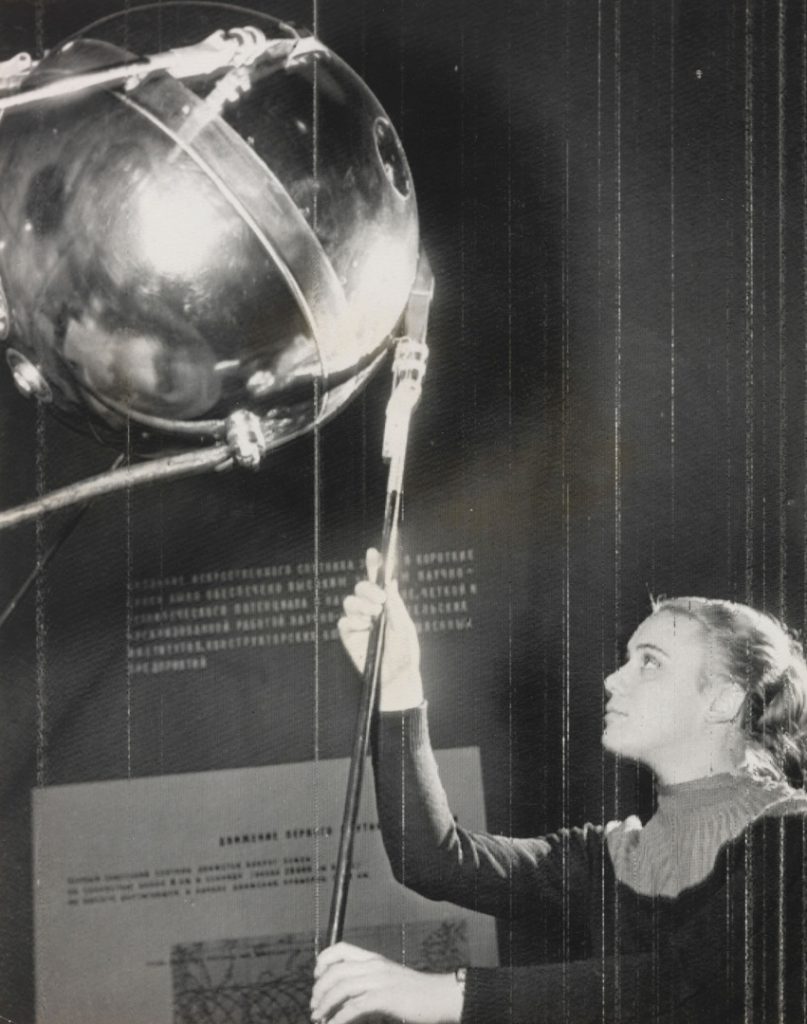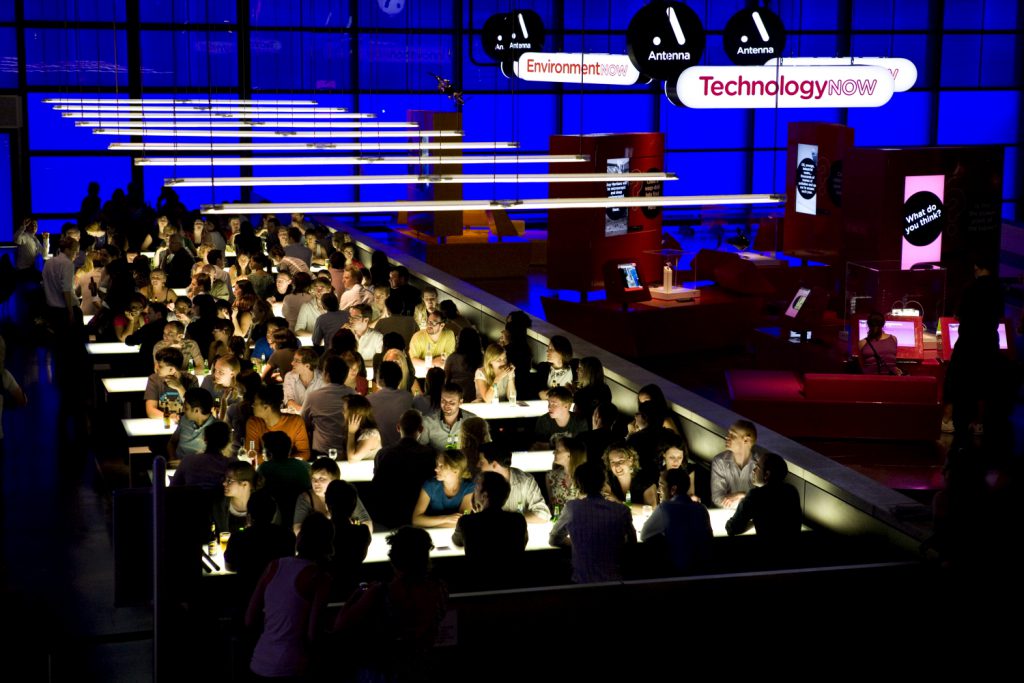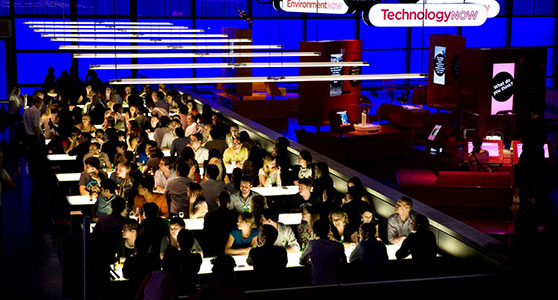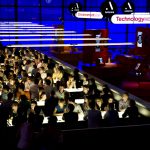Sputnik and the ‘scientific revolution’ – what happened to social justice?
Article DOI: https://dx.doi.org/10.15180/140108
Sputnik and the 'scientific revolution' - what happened to social justice?
https://dx.doi.org/10.15180/140108/003I was born into a world that had no artificial satellites. It didn’t last long, though; within four months Sputnik 1 was circling the Earth every 90 minutes (see Figure 1). To some, the launch heralded a new era – of space travel and unlimited energy; to others it was threatening – politically, economically or militarily. It was clear, though, that the world would never be the same again.

Almost exactly six years to the day after the launch, the newly-elected leader of the Labour Party, Harold Wilson, set out a radical agenda for change at the party’s annual conference:
‘…in all our plans for the future, we are re-defining and re-stating our Socialism in terms of the scientific revolution. But that revolution cannot become a reality unless we are prepared to make far-reaching changes in economic and social attitudes which permeate our whole system of society’ (Labour Party, 1963, p 7).
Wilson’s point was that without a more equitable society, the advances in science and technology that seemed to be on the horizon would never be achieved. No doubt at the back of Wilson’s mind was C P Snow’s Rede lecture (1959), later published as ‘The Two Cultures and the Scientific Revolution’, which ‘diagnosed the loss of a common culture and [identified] the emergence of two distinct cultures: those represented by scientists on the one hand and those Snow termed “literary intellectuals” on the other’ (Critchley, 2001, p 49).
‘If the former are in favour of social reform and progress through science, technology and industry, then intellectuals are what Snow terms “natural Luddites” in their understanding of and sympathy for advanced industrial society’ (ibid.).
The point I wish to make here is that we sometimes forget that there is far more to science communication and engagement than enthusing people about the wonders of nature/the universe/the human body and so on. In my view,[1] science engagement that does not promote, in Wilson’s words, ‘far-reaching changes in economic and social attitudes’ is a hollow enterprise.
Wilson realised that the major changes in society that he wanted to see would require a greater role for science in all walks of life: ‘…in the Cabinet room and the board room alike those charged with the control of our affairs must be ready to think and to speak in the language of our scientific age’ (ibid., p 7). On another occasion, Wilson said that he wanted to ‘replace the cloth cap [with] the white laboratory coat as the symbol of British labour’ (Guardian, 2013).
Wilson could refer to ‘the white laboratory coat’ knowing that everyone would understand what he meant. Even though the majority of the public would never see inside a real laboratory in their lives, they had seen many on cinema screens, invariably populated by male scientists often working for or with the military. Wilson knew that the British public would not only identify ‘boffins’ as having contributed to winning the war but would also see them as an increasingly important group of people in winning the peace. In his mind, the workers in the white coats would be ones who would help to forge the new Britain in the ‘white heat’ of the revolution that was his vision – Wilson’s father had been an industrial chemist and so he was probably more familiar than most with lab coats.
The idea, though, that the public might actually influence science policy would barely have appeared on Wilson’s radar. In the ‘swinging sixties’ science was still seen as accessible to a small number of remote individuals rather than as something for everyone to engage in. The public certainly paid for science and scientific research and much of that funding went into military applications. In order to continue its research, science needed public support and it needed a continuous stream of bright new recruits. A pro-active science lobby began to establish itself, keen to promote science-friendly policies and to promote its work to the public.
Changes in UK society in the 1960s and 1970s created a public more likely to challenge authority. Their attitudes were fuelled by frustration with the continued inequity in UK society and unease about the state of the environment. Science and scientists were beginning to be seen as part of the problem as well as part of the solution. Growing concern about the potential damage that could be done to science if it lost public trust led to the emergence of a public understanding of science movement.
This was a time when the public’s engagement with science and technology tended to be driven by invention, innovation and events. The successful Moon landing in 1969 was seen as the epitome of human ingenuity but many recognised that rather than being a ‘giant leap for mankind’ it was, in reality, an example of US political will asserting itself over its Cold War enemy, the USSR. Public interest in Moon landings began to tail-off remarkably during the 1970s despite the intense drama of Apollo 13.
Increasing unease among the science lobby about the level of public support during the 1970s and 1980s led to calls for a rethink of the relationship between science and society. The publication by the Royal Society, in 1985, of the Bodmer Report, ‘The Public Understanding of Science’, marked a turning point in that relationship. The report’s authors identified a range of recommendations but their enduring legacy was a recognition that science itself had to change:
‘Scientists must learn to communicate with the public, be willing to do so, and indeed consider it their duty to do so. All scientists need, therefore, to learn about the media and their constraints and learn how to explain science simply, without jargon and without being condescending. Each sector of the scientific community should consider, for example, providing training on communication and greater understanding of the media, arranging non-specialist lectures and demonstrations, organizing scientific competitions for younger people, providing briefings for journalists and generally by improving their public relations’ (1985, p 6).
A new world of science communication emerged but it was not an easy birth; many scientists felt uncomfortable with being asked to engage with the public and did not see it as ‘their duty’. A number of initiatives were set up to encourage what was, in essence, a major cultural shift in the way that science and society interacted. Not the least of them was the setting up of the Committee for the Public Understanding of Science (CoPUS).
Bodmer recognised that ‘Museums are a major informal mechanism for effecting public understanding of science’. In the wake of the report, a number of UK museums and science centres began to experiment with methods of engaging with the public. However, during the post-Bodmer period a number of issues significantly affected the public’s trust in science. Science found itself increasingly portrayed as being secretive or incompetent whenever stories appeared involving the MMR vaccine, nanotechnologies, genetically-modified foods or Bovine spongiform encephalopathy (‘mad cow disease’). Much of this public unease was, and continues to be, encouraged by a media which at times might be seen as anti-science.
A gulf had opened up between scientists and the public and no amount of ‘public understanding’ initiatives was going to make much difference. At the turn of the century, the House of Lords Select Committee on Science and Technology devoted time to examining the relationship between science and society. The Committee’s Third Report called for a ‘new mood for dialogue’ (House of Lords Select Committee, 2000, p 37). Whereas PUS was seen as being based on a deficit model of public ‘ignorance’ (Wynne, 2005), the ‘dialogue approach’ involved some mutual engagement. A number of strategies evolved to facilitate such engagement:
‘…consultations on a national level, consultations at a local level, deliberative polling, standing consultative panels, focus groups, citizens’ juries, consensus conferences, stakeholder dialogues, Internet dialogues’ (Davies et al., 2009, p 339).
Indeed, it is 20 years since the UK’s first national consensus conference on plant biotechnology took place at the Science Museum. Since then, museums have diversified their approach to engaging the public with science and scientists. The Science Museum and its neighbour, the Natural History Museum (NHM) together attract more than eight million visitors each year. Visitors to the NHM are able to take part in daily Nature Live events (twice daily at the weekends) where one of the museum’s scientists explains some aspect of their work in the David Attenborough studio, which can seat over 60 people. A science communicator (a ‘host’) is on hand to work with the scientist before and after the session to increase the interactivity of the 45-minute session.
Unlike the NHM, the Science Museum does not have hundreds of scientists working on-site and so engages the public in different ways. Following the approach pioneered in Paris, the museum created Antenna, ‘a fully integrated gallery and website that explores the latest news in science, technology, medicine, the environment and innovation’. The approach that Antenna takes is described on the museum website:
‘We don’t just give you our take on a story, we interview experts with different viewpoints and we’ve created a community space where you can share your thoughts through comments, polls and emotional responses […] Comments made on the web will be displayed on gallery and vice versa, so wherever you are in the world you can be a part of the conversation’ (Science Museum, n.d.).
Another part of the Science Museum is the Dana Centre, a public event venue aimed at adults that opened in 2003. Whereas the NHM’s Nature Live tends to adopt a similar format for most of its sessions, the Dana Centre has developed a wider set of approaches:
‘Enjoy a night of artistic licence as Edinburgh Fringe-style stand-up comics debunk science myths, beatboxers take you on a musical journey all from the mouth and artists use bacteria to generate art. Get hands-on in our test-lab nights. Vent your views in conversation with others at our dialogue events. Or come face-to-face with leading experts in challenging issues facing modern science’ (Dana Centre, n.d.).
Researchers have studied public engagement at Nature Live and at the Dana Centre. Amy Seakins, for example, has spent three years studying the impact that meeting a scientist during a Nature Live session had on museum visitors. Her research, jointly funded by the museum and by King’s College London, involved looking at the questions that members of the public had before the session, immediately after the session and some weeks later. She found a consistent pattern in that before the session, visitors were primarily interested in the topic (for example, meteorites or insects). However, by the end of the session, visitors had become more interested in the scientist themselves and wanted to know more about them and their work. This interest in the scientist remained for at least six to eight weeks after the event.
Typically the Dana Centre hosts 100 sessions each year with an average attendance of around 60 people. The website, though, receives over 125,000 visits from more than 170 countries. Since its inception, the Dana Centre’s events have been evaluated by members of the Museum’s in-house Audience Research Group, with a focus on exploring what effective dialogue would look like, and how it can be measured. The research included both an 18-month pilot phase where prototype events were evaluated, and three parallel post-graduate level studies on aspects of dialogue.
However, Davies et al. (Davies et al. 2009, p 347) suggest that we should be cautious in our estimation of the effectiveness of the new models of engagement noting that:
‘…dialogue events can in fact quickly revert to traditional question and answer sessions, that events may continue to operate under assumptions of the primacy of scientific knowledge, and that the roles participants assume or have imposed upon them can damage equity. Such problems may – we suggest – be due to cultural habit, a lack of clarity among organizers, speakers and other participants with respect to the intended nature of the event, or be based on how the event is policed. Those who ‘facilitate, for example, may not be trained or confident in producing this style of interaction. Publics also, it appears, often continue to come to dialogue events with the expectation of learning from experts and deferring to perceived authority.’
Is it the case, perhaps, that the public doesn’t want to engage with science in the way that some people advocate? No-one can be scientifically literate to such a degree that they can engage knowledgeably on any current science topic, can they? (Bell, 2010) Perhaps people simply want to attend events to learn something new, without being asked to engage in dialogue? Have we really come very far since the 1960s? Are we any closer to a science engagement that promotes ‘far-reaching changes in economic and social attitudes’? Seakins’ work shows that engaging with scientists can change people’s awareness of scientists as human beings, but is that likely to encourage them to challenge science to support social reform and progress?
What is clear, however, is that these initiatives have led to a sea change in how museums engage with non-expert audiences. The Dana Centre evening sessions are paralleled by Lates with MasterCard, which take place in the Science Museum on the last Wednesday of each month from 18.45 until 22.00 – and for the same young adult, ‘non-science’ audience:
‘Lates are themed, spanning issues as far apart as sex, alcohol and climate change, but always contain science shows, a pub quiz (see Figure 2), Punk Science comedy shows and the best silent disco in town (underneath real space rockets). Dubbed “drinking and thinking” by visitors, […] with DJs and bars on three floors of the museum’ (Science Museum, n.d.).

Lates with MasterCard have become a permanent feature in the Science Museum’s calendar, now reaching around 5,000 visitors each evening. Although it has been acknowledged that they are ‘largely for people “in the know” connected by social media and friendship groups’ (Steiner, 2012, p 3), the reach beyond the ‘usual suspects’ is encouraging – 60 per cent of ‘Lates’ visitors are women and more than half have not visited the Science Museum before.
Other innovations which can trace their origins back to the Dana Centre include Talk Science teacher courses and a number of participation projects, such as involving audiences in curating exhibition cases. During the Museum’s temporary exhibition, Playing with Science, which examined the history of science-related toys, visitors were invited:
‘…to bring in their own toys on a few special weekends. Visitors’ toys were temporarily accessioned into the collection and displayed in a few vitrines at the end of the exhibition. Contributors were photographed with their favorite toy and wrote short statements about them, such as “I play with this toy and pretend to be out in space”, or “I like making girls do boy parts because I am a tomboy”. These visitor contributions personalized the exhibition and helped noncontributing visitors connect to the objects on display by triggering their own toy memories. It also introduced a dynamic element to an otherwise static historical display, thus supporting a light and evolving conversation among visitors, the institution, and the objects themselves’ (Simon, n.d.).
Scientists are entering the mix too – for example the recent Painless Antenna exhibition was co-created by chronic pain sufferers, anaesthetists, and a museum school. There is some evidence that public attitudes towards science are shifting. In April 2010, the Guardian newspaper ran a feature entitled ‘How science became cool’, explaining that:
‘The incredible ambition of the Large Hadron Collider has fired our imagination; physicists have become cult TV stars; dramatic new pictures from space grace a million computer screensavers. Is this a golden age of science?’ (Guardian, 2010).
Perhaps ‘golden age’ is an exaggeration but there is no doubt that science is enjoying levels of popularity that are unprecedented. This level of popularity has some benefits – the leak of emails from British climate change scientists in 2009 did not generate the same type of anti-science media coverage as did earlier ‘science crises’.
Hopefully benefiting from the ‘Brian Cox effect’ are the UK’s relatively large number of science and discovery centres, which host around 20 million visitors each year (Frontier Economics, 2009, ASDC, 2010). However, not everyone is happy with the state of science engagement in the UK – the Guardian’s ‘Bad Science’ columnist, Ben Goldacre, is of the opinion that:
‘The indulgent and well-financed “public engagement with science” community has been worse than useless, because it too is obsessed with taking the message to everyone, rarely offering stimulating content to the people who are already interested’ (Goldacre, 2008, p 321).
More criticism comes from the Science for All Expert Group, an independent committee tasked by the government to write an action plan that would, among other things, deliver a shift in cultural awareness, recognition and support for science. In one of seven reports commissioned by the Expert Group, the authors identified deeply-rooted remnants of Snow’s ‘Two Cultures’:
‘Public engagement remains counter-cultural to the ethos of most public and educational institutions, the civil service and scientific research. Over the last ten years, public engagement has been encouraged; yet the ethos of expert leadership and one-way communication still predominates’ (Science for All Expert Group, 2010, p 39).
By way of explanation, the Expert Group noted that ‘we have only partial knowledge of why the public engages, how engagement activities can be most effectively developed and delivered, and what the impact of these events actually is’ (ibid.).
Despite almost obsessive calls for the sector to demonstrate its ‘impact’ by policy-makers and funders, the sector has struggled. Even Frontier Economics, ‘Europe’s leading economic consultancy’, who were commissioned to evaluate the impact of science centres in England on the Government’s Science and Society agenda and to assess whether science centres represented ‘good value for money in comparison with other STEM-related organisations’ (Frontier Economics, 2009, p 2) had to report that:
‘We have not been able to assess whether science centres are good value for money relative to other comparator programmes. This is because there is insufficient evidence on the long term outcomes of science centres or comparator programmes.’
The 20 million visitors each year seem to think that they are getting value for money but identifying exactly what impact their visits have is still proving to be elusive. The sector itself has responded to the challenge by devising a number of possible strategies (ASDC, 2010):
‘The methodology we propose first collects the quantitative data, for example, how many adults and children explore science in their leisure time at our centres and how many school students take part in specialised curriculum-supporting workshops. However, we do not believe this alone is sufficient. We must correlate this with the quality of the experience. Thus we propose assessing via three bespoke ‘impact cards’ targeted at teachers, students or families. The areas of impact we are specifically looking at are within the realm of the GLOs (Generic Learning Outcomes) created by the Museums, Libraries and Archives Council (MLA) and used extensively by most government-funded museums. We also use these cards to explore if visitors feel science and discovery centres are inclusive places, trusted to offer science in an honest manner and in a way that is relevant to everyday life’ (ASDC, 2010, p 8). So, as I have written elsewhere:
‘The science communication and public engagement sector in the UK is at a crossroads – it is fragmented, lacking in credible evidence of its success (in the eyes of its critics) and yet intuitively aware that it can make a major contribution to a vision of the world that has at its heart a knowledge that science is seen as society’s greatest cultural asset of the 21st century’ (Dillon, 2011, p 7).
Despite having one of the most well-supported and popular science engagement sectors in the world we are nowhere near to seeing the ‘far-reaching changes in economic and social attitudes’ that might result from the scientific revolution. However, the ASDC’s focus on exploring ‘if visitors feel science and discovery centres are inclusive places, trusted to offer science in an honest manner and in a way that is relevant to everyday life’ is very encouraging.
The Wellcome Trust, together with a number of US funders, are expected to announce a call for collaborative projects involving museums, science centres and researchers in March 2014. This call is a direct result of Wellcome’s review of the sector, which recommended that ‘The science learning and engagement system needs support to build its knowledge base of which outcomes to measure and the ways in which they might be measured’ (Falk et al., p 6).
Partnerships between museums and researchers in the learning sciences already exists in the UK and elsewhere. Building on the work of the ASPIRES project (Archer et al., 2012), the BP-funded Enterprising Science Project at the Science Museum aims to:
‘…build “science capital” (science-related qualifications, interest, literacy and social contacts) among teachers, students and their families. Our approach involves collaboration between secondary schools, young people (11–16 years of age) and their families, and museums and science centres’ (King’s College London, n.d.).
While the main focus of the Wellcome call will be on cross-venue learning, assessment, longitudinal studies and developing a culture of reflective research and practice, one hopes that projects will be encouraged that promote social justice and inclusion rather than simply encouraging more people to take up STEM subjects at university and beyond. The scientific revolution promised to us 50 years ago ‘cannot become a reality unless we are prepared to make far-reaching changes in economic and social attitudes which permeate our whole system of society’. That was the challenge then: it has not gone away.




